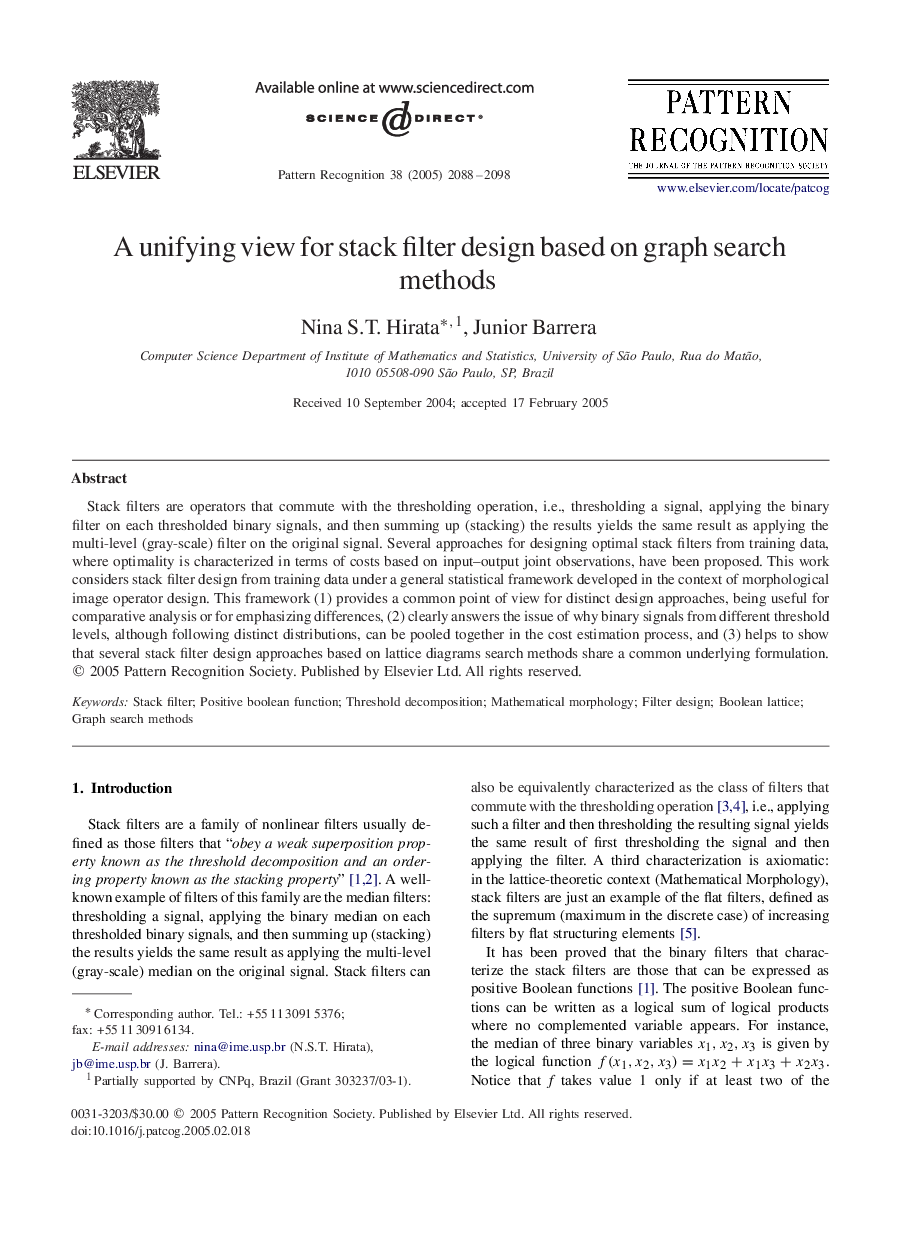| Article ID | Journal | Published Year | Pages | File Type |
|---|---|---|---|---|
| 533007 | Pattern Recognition | 2005 | 11 Pages |
Stack filters are operators that commute with the thresholding operation, i.e., thresholding a signal, applying the binary filter on each thresholded binary signals, and then summing up (stacking) the results yields the same result as applying the multi-level (gray-scale) filter on the original signal. Several approaches for designing optimal stack filters from training data, where optimality is characterized in terms of costs based on input–output joint observations, have been proposed. This work considers stack filter design from training data under a general statistical framework developed in the context of morphological image operator design. This framework (1) provides a common point of view for distinct design approaches, being useful for comparative analysis or for emphasizing differences, (2) clearly answers the issue of why binary signals from different threshold levels, although following distinct distributions, can be pooled together in the cost estimation process, and (3) helps to show that several stack filter design approaches based on lattice diagrams search methods share a common underlying formulation.
